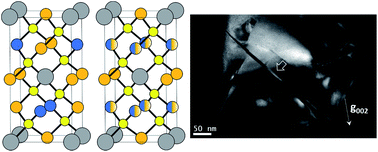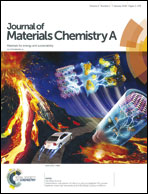Crystal structure and anti-site boundary defect characterisation of Cu2ZnSnSe4
Abstract
The crystal structure identification of the photovoltaic material Cu2ZnSnSe4 (CZTSe) is challenging due to the distinguishing feature between the two polymorphs, kesterite and stannite, being the arrangement of Cu and Zn ions. Here an energy dispersive X-ray (EDX) technique, based on electron beam channeling along specific crystallographic planes in a transmission electron microscope (TEM), is used to identify the structure. Regions a few 100 nm in size can be analysed using this method, unlike neutron or anomalous X-ray scattering. The parent crystal structure of CZTSe, annealed on either side of the order–disorder transition temperature, was correctly identified as being kesterite. The presence of 1/2[110] (001) and 1/4[201] (101) anti-site boundaries (ASBs) has also been investigated. The density of ASBs is higher above the transition temperature, due to a smaller energy penalty for disordering on the 2c and 2d Wyckoff sites. A nearest neighbour cation analysis predicted the 1/2[110] (001) ASB to have the lowest formation energy. From density functional theory (DFT) simulations the 1/2[110] (001) ASB energy is only 43 mJ m−2 and furthermore it is not a recombination site or current blocking layer, so that photovoltaic device performance is not significantly degraded.



 Please wait while we load your content...
Please wait while we load your content...